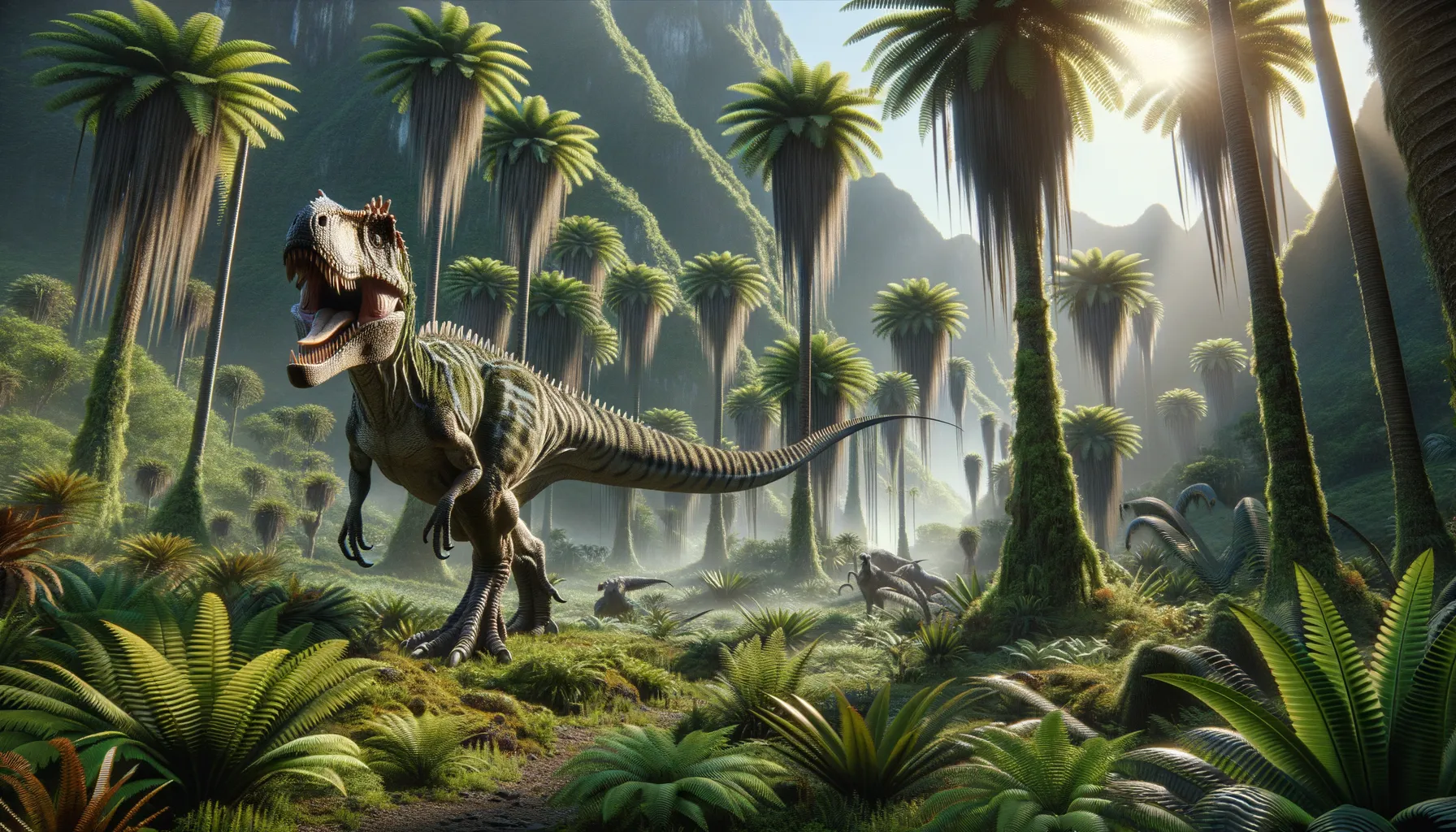
Dracovenator
Swift predator of the Jurassic era.
Period
Jurassic
Length
Measured about 6 to 7 meters in length.
Height
Stood around 2 meters tall at the hip.
Weight
Weighed approximately 400-700 kilograms.
Dracovenator was a carnivorous dinosaur from the Early Jurassic period. It is considered a primitive member of the theropod group, showcasing some of the early evolutionary traits that would be seen in later, more famous dinosaurs like the Tyrannosaurus rex. Found in South Africa, Dracovenator is known primarily from skull fragments, which indicate it was a fast-moving predator with a keen sense of smell.
Diet
Dracovenator was a carnivore, primarily feeding on smaller dinosaurs and other animals of its time. Its sharp teeth and agile body would have made it an effective hunter.
Hunting
Dracovenator likely employed ambush tactics, stalking its prey before launching quick attacks. It used its powerful legs to close distances quickly, capitalizing on surprise and speed.
Environmental challenges
Dracovenator lived in a world of changing climates and volcanic activity, which could have dramatically altered its environment. Competition for food with other predators was another significant challenge it faced. Seasonal variations would have affected prey availability, requiring adaptability in hunting strategies.
Speed
Dracovenator was a swift predator, likely capable of moderate to high speeds for chasing prey.
Lifespan
Estimated to live up to 20-30 years in the wild.
First discovery
Discovered in the early 2000s in South Africa.
Fun Facts
- Dracovenator means 'dragon hunter,' a fitting name for this fierce predator.
- It lived during the Early Jurassic period, around 200 million years ago.
- Dracovenator fossils have been found in South Africa, giving clues about its habitat.
- Though only partial remains have been found, scientists estimate it was around 20 feet long.
- Dracovenator is part of the theropod group, the same group that includes T. rex and modern birds.
- This dinosaur likely had a strong jaw and sharp teeth, perfect for hunting its prey.
Growth and Development
Dracovenator likely grew rapidly during its early years to reach a competitive size quickly. It evolved certain skeletal features that improved its hunting abilities, such as a robust skull and specialized teeth. Juveniles might have relied on areas with abundant smaller prey to sustain their growth.
Habitat
This dinosaur roamed the ancient landscapes of what is now South Africa, which consisted of forested regions and river valleys. Such habitats provided ample cover for stalking prey and resources for survival. The landscape was shared with various other dinosaur species and early mammals.
Interaction with other species
As a predator, Dracovenator interacted primarily as a hunter, impacting the populations of smaller herbivores and other animals. It faced competition from other carnivores, which may have influenced its hunting strategies and territory. Dinosaurian prey likely evolved defenses and behaviors to elude its predation.
Natural lifespan
In natural settings, Dracovenator lived around 20-30 years.
Reproduction
Like many theropods, Dracovenator likely laid eggs, with nests possibly hidden in dense vegetation for protection. Parental care details remain speculative, but some theropods are known to have guarded their nests.
Social behaviour
Dracovenator might have been solitary, like many modern large predators, relying on stealth and speed to catch its prey. However, it may have occasionally formed temporary groups for hunting or mating. Social hierarchy within these groups, if they existed, would have been dictated by size and strength.
Fossil locations
Fossils of Dracovenator have been predominantly found in South Africa. These finds primarily consist of skull fragments, which help paleontologists understand its feeding mechanisms and ecological role. The location of these fossils provides insight into the distribution and habitat preferences of this Jurassic predator.
